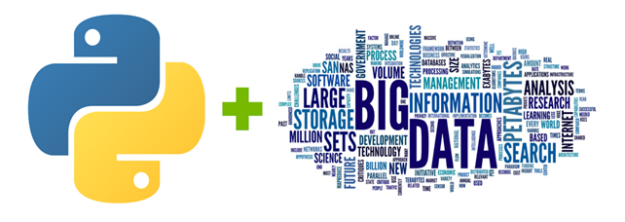Python and Data Processing for the Humanities (RIMA Course)

Faculty:
No posts found!
Course Schedule:
Tuesdays and Thursdays, 10:10 –11:30 AM (UTC-4)
Professor: Ivan Iufriakov
Semester: Spring 2024 (January 29 – May 21)
Subject: CS (Computer Science)
Course Level: 100
Number of Bard Credits: 4
Course Title: Python and data processing for the humanities (The course is prepared by the Russian Independent Media Archive team)
Max Enrollment: 22
Schedule: Tuesdays and Thursdays, 10:10 –11:30 AM (UTC-4)
Distribution Area: Mathematics and Computing
Cross-Listing(s): no
Language of Instruction: English
Automated data analysis is becoming increasingly necessary in the humanities:
Growing amount of data. Data volumes have increased significantly in recent years, including data from social networks, text data, geographic data, etc. In this regard, it is important to learn how to process and analyze large amounts of data in order to benefit from them.
Data integration. The humanities can use data from a variety of sources, such as social media data, surveys, geographic data, and so on. Integrating and analyzing this data can help scientists better understand social, political, and cultural processes.
Requirements for improving efficiency and accuracy. By analyzing data and using the Python programming language, you can improve the accuracy and effectiveness of your research. This can help scientists get more accurate results and save time.
Development of new methods and technologies. The development of data analysis and the use of the Python programming language has led to the creation of new methods and technologies that help scientists work with data more efficiently and accurately.
Course Objectives:
— Understand the basics of Python programming.
— Apply Python skills to analyze and visualize humanities data.
— Develop critical thinking skills through computational approaches to humanities questions.
— Complete a final project that applies Python skills to a humanities topic.
Course
covers a wide range of topics related to data processing in Python, starting with the basic concepts of the language and ending with advanced methods of data analysis.
It takes a hands-on approach to learning, including many hands-on tasks and projects that will help students apply their knowledge in real life. This will allow students to better understand the material and learn how to solve real-world problems that may arise when analyzing data.
It uses state-of-the-art learning methods, including online resources, interactive exercises, and team collaboration.
Python is one of the most popular programming languages in the world, and has many libraries and tools specifically designed for data analysis. This makes it an excellent choice in areas where data analysis is becoming increasingly important.
Requirements
Of course, the ideal case is if the student already knows the basics of python, but this is not a prerequisite, its basics can be mastered within the course. In general, basic knowledge in the field of computer technology is sufficient to complete the course.
To apply for the course the candidates are asked to write a detailed explanation of what goals they aim to achieve professionally or scholarly having mastered the python and data-processing skills.
____________________________________________________________________________
Who will benefit from the course
Linguists
Text analysis: Using Python and its libraries, you can analyze large amounts of text data to identify keywords, expressions, determine the tone of the text, and other characteristics that can help in linguistic research.
Historians
Historical Data Processing and Analysis: You can use Python to process and analyze historical data to identify patterns, trends, and events that can help you build historical models and predictions.
Sociologists
Social Research Data Analysis: You can use Python to process and analyze social research data to identify trends, patterns, and events that can help you build social models and predictions.
Psychologists
Analysis of Psychological Research data: You can use Python to process and analyze psychological research data to identify trends, patterns, and events that can help you build psychological models and predictions.
Economists
Analysis of Economic Research data: You can use Python to process and analyze economic research data to identify trends, patterns, and events that can help you build economic models and predictions.
Guidelines for the Statement of Purpose:
Craft a reflective statement of purpose explaining your interest in the Smolny Beyond Borders online course. The file should be saved with your name and course title as the filename and uploaded accordingly. Your statement’s clarity and substance will significantly influence our selection. Convey your motivations and aspirations for this course succinctly but thoroughly. Kindly write your statement in the course’s Language of Instruction.
Application Portal Instructions:
1) Use the Latin alphabet for all entries on the portal, including your name. If the Language of Instruction is Russian, you may use Cyrillic only within the Statement of Purpose file, and the title of the file should still be in English.
2) Refrain from using email addresses associated with Russian or Belarusian educational institutions.
3) While completing the “Required Information” section, ensure you fill in the “Province” field for your address.
4) Provide an address outside Russia or Belarus in both the “Required Information” and “Geographic Location Confirmation” sections of the “Online Course Application”. This ensures we can send your transcript.
5) You must press the “Sign” button twice during the application.
6) If you hold a bachelor’s degree, select “4th+” in the “Academic Year (online)” section.
7) Applicants either unaffiliated or affiliated with educational institutions in Russia and Belarus should list ‘Smolny Beyond Borders’ as their educational institution.
8) In the student ID section, enter ‘SBB’.
9) Consider drafting your motivation letter ahead of time. Save it as a separate file with this format: LastName_FirstName_CourseTitle for a smoother application process.
